The country has faced persistent internal conflicts involving the government, paramilitary factions, and drug cartels since the 1960s, hindering the full development of its art and culture scene. Nonetheless, Colombian painters have not only produced art but also seized the chance to address the complex themes of warfare and politics in their creations.
Andrés de Santa Maria
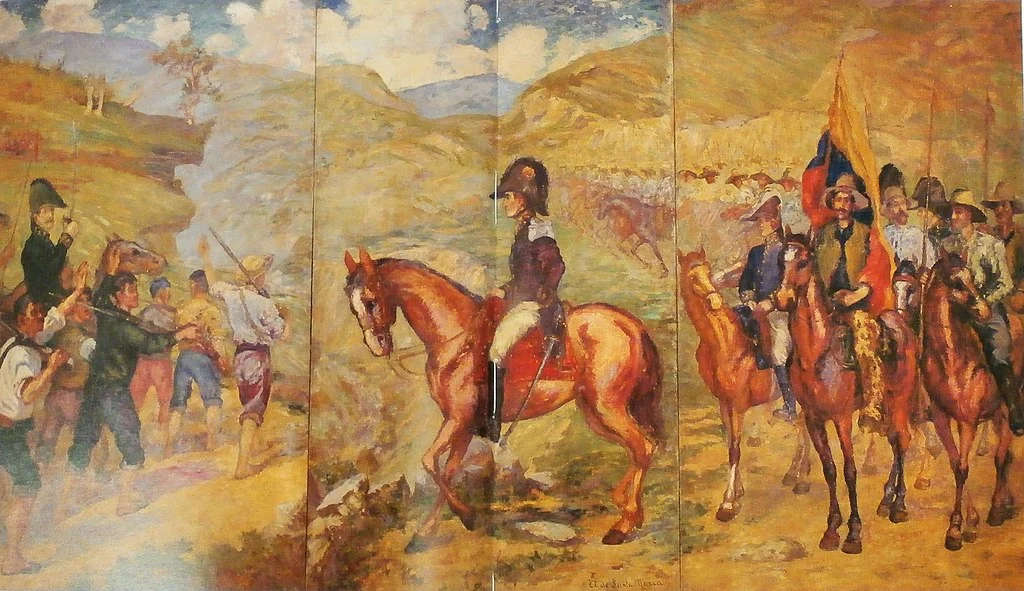
Andrés de Santa Maria (December 16, 1860 – April 29, 1945) was a Colombian painter who achieved international recognition and is hailed as the pioneer of impressionism in Colombia. His solitary pursuit of avant-garde painting marked the dawn of modern art in the country.
Born into a well-off family with political ties, Santa Maria’s artistic aspirations initially clashed with his parent’s wishes for him to pursue a career in finance. Following his father’s death in 1882, he finally pursued painting, studying at the School of Art in Paris and working under notable artists like Ferdinand Jacques Humbert and Henri Gervex.
Santa Maria gained recognition with his painting “Launderers of the Seine,” exhibited in the Salon of French Artists in 1887. His works from this period demonstrated impressionist elements and a keen interest in social themes. He continued exhibiting in salons and gained prominence.
After returning to Colombia in 1894, Santa Maria faced controversies for his avant-garde approach, which broke away from traditional academic art. He was appointed as a professor at the Escuela Nacional de Bellas Artes in Bogotá, where he shared his European experiences.
Santa Maria’s career saw different phases, including periods spent in Europe, where he continued to evolve his style. His paintings evolved from impressionism to a divisionist style with pure colors and contrasts. His later works displayed denser, vibrant forms created with thick layers of paint applied with knives and spatulas.
Débora Arango
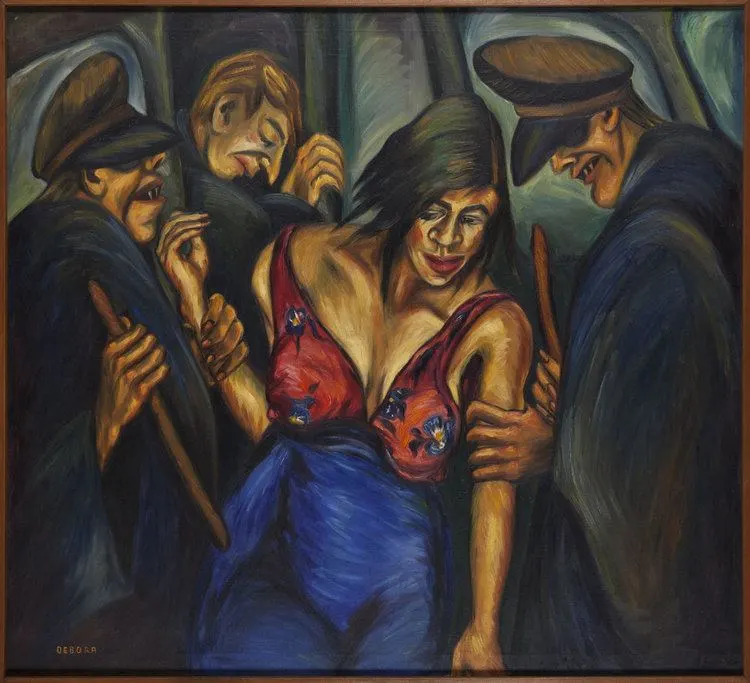
Débora Arango Pérez was a pioneering Colombian artist born on November 11, 1907, in Medellín. Beyond her role as a painter, she excelled in ceramics and graphic art. Arango’s career revolved around addressing politically charged and controversial subjects, spanning from the role of the Catholic Church to dictatorships and social inequalities.
Raised in a privileged family, Arango displayed an early rebellious spirit, which eventually led her to pursue art education despite societal norms. Under the mentorship of Eladio Vélez and Pedro Nel Gomez, she honed her craft and diverged from traditional styles to adopt expressive, impactful techniques.
Her works, often characterized as figurative expressionism, featured dramatic brushstrokes and lines to evoke strong emotions. Arango’s art embodied her courage to challenge societal norms, particularly through her depictions of women’s roles and her scathing political critiques.
The 1940s marked Arango’s emergence as a powerful force in Colombian art, notably with her controversial nudes. In the 1950s and 60s, she used her paintings to expose the violence and corruption within the Colombian government, which drew both admiration and opposition.
Arango’s dedication and artistic vision have contributed to a reevaluation of her work, culminating in numerous awards and honors. Her pieces, numbering over 233, were donated to the Medellín Museum of Modern Art in 1986. Arango’s legacy endures as a feminist icon and an artist who unflinchingly tackled challenging social and political issues.
Ana Mercedes Hoyos
Born in Bogota in 1942, Colombian artist Ana Mercedes Hoyos was deeply passionate about her Latin American heritage, reflected prominently in her figurative artworks. Educated at the Universidad de los Andes in Bogota and later in the United States, she expanded her artistic horizons through travel and studied painting techniques in Italy.
Hoyos’s artistic prowess earned her numerous accolades and honors, establishing her as a significant figure in Colombian art. Her vibrant paintings, often depicting human figures, animals, and landscapes, featured bold colors, expressive lines, and distinctive forms. Rooted in her Latin heritage, she skillfully wove Colombian folk traditions into her art, challenging the stereotype of political art prevalent in the region.
Through her distinct and culturally infused creations, Hoyos not only enriched Latin American art but also celebrated the profound cultural legacy of her homeland. Her artistic journey concluded with her passing in 2014, leaving behind a remarkable artistic legacy.
Pedro José Figueroa
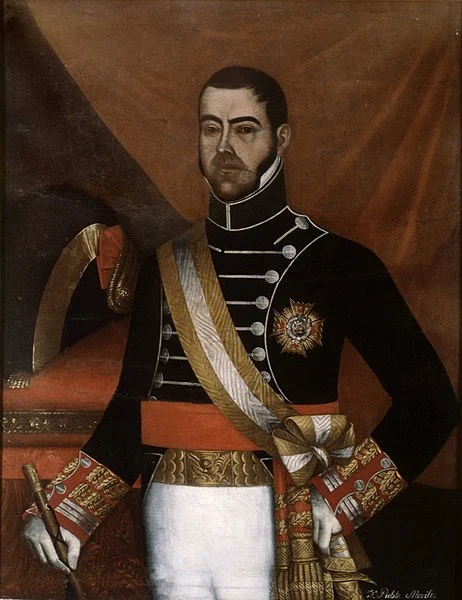
Pedro José Figueroa was a Colombian portrait painter, who left an indelible mark on the art scene of Bogotá, where he was born and later passed away. Descended from a family of renowned artists from the 17th century, Figueroa received his initial artistic training under the tutelage of Pablo Antonio García.
Establishing his own studio after completing his studies, Figueroa shared his expertise with notable students such as painter Garcia Hevia and historian José Manuel Goot, along with his own sons. Notable for his artistic contributions, Figueroa gained recognition through significant works like the portrait of Viceroy Amar y Borbon in 1804 and the portrait of Dr. Jose Domingo Duquesne published in “Papel Periodico Ilustrado.”
His legacy lives on through portraits housed in the Cathedral of Bogota, providing invaluable insight into the influential figures of Colombia’s transformative transition from colony to republic.
Fernando Botero
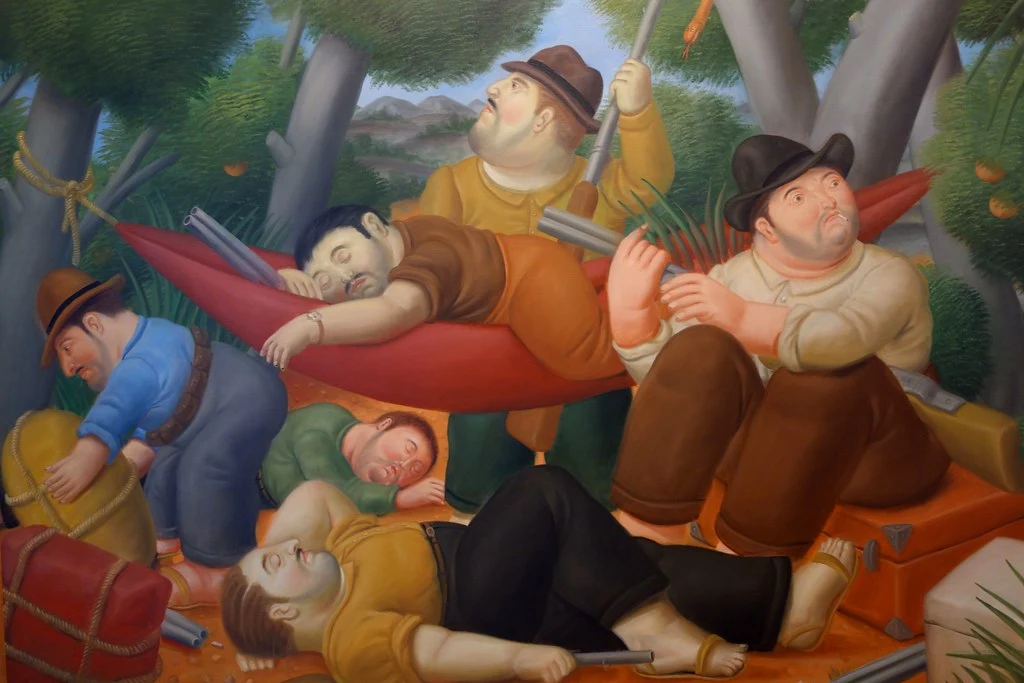
Fernando Botero Angulo (born April 19, 1932) is a celebrated Colombian figurative artist and sculptor, hailing from Medellín. Renowned for his unique “Boterismo” style, characterized by exaggerated and voluminous figures, his work often conveys political criticism or humor. Botero stands as Latin America’s most recognized and quoted living artist, with his art gracing prominent global sites like New York City’s Park Avenue and Paris’ Champs-Élysées.
Affectionately self-termed as “the most Colombian of Colombian artists,” Botero gained national prominence by winning the first prize at the Salón de Artistas Colombianos in 1958. His artistic journey led him to Paris, where he transitioned into sculpture, achieving worldwide acclaim by the 1990s. His collections are held by major international museums and private collectors.
Notably, his “Abu Ghraib” series drew international attention, addressing prisoner abuses during the Iraq War. While his subjects encompass still-lifes and landscapes, Botero’s hallmark remains situational portraiture, characterized by proportionally exaggerated forms. Despite limited time in Colombia, he considers himself its most Colombian artist due to his detachment from global art trends.
Enrique Grau
Enrique Grau was a prominent Colombian artist celebrated for his poignant portrayals of Amerindian and Afro-Colombian figures. He played a vital role in shaping Colombian modern art and was part of a trio of influential artists alongside Fernando Botero and Alejandro Obregón.
Born in Panama City to Colombian parents, Grau grew up in Cartagena, Colombia. He developed his artistic talent under the influence of Colombian masters like Ignacio Gomez Jaramillo, Santiago Martinez Delgado, and Pedro Nel Gómez. Grau honed his skills further by studying at the Art Students League in New York and touring Italy to learn etching and fresco techniques.
Grau’s art, characterized by its fusion of white, black, and indigenous figures and various symbolic objects, garnered international acclaim. His work often incorporated elements like masks, eggs, fruits, and cages, creating rich layers of meaning.
Germán Londoño
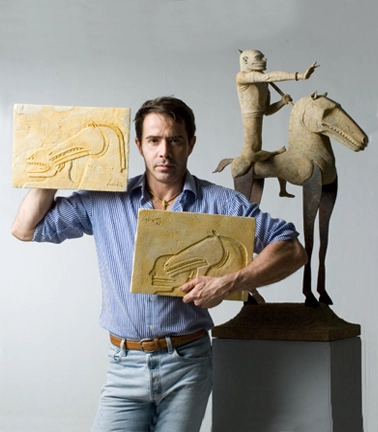
Germán Londoño, born on October 12, 1961, in Medellín, Colombia, is a versatile Colombian artist excelling in painting, drawing, and sculpture. He received his artistic education from the Libe de Zulátegui Arts Academy in Medellín and further refined his skills with a Master’s degree in Lithography from the “Scuola Internazionale d’ Arte IL Bisonte” in Florence, Italy.
Londoño’s artistic prowess has graced the walls of prestigious museums like the Bogotá Museum of Modern Art, the Museum of Antioquia, the La Tertulia Museum, and the Museum of Lisbon. His creations have also adorned renowned galleries in Colombia, Italy, Portugal, Spain, and the United States.
His works are celebrated for their narrative depth and unique approach. Londoño often employs humor and caricature as strategies, skillfully portraying everyday life’s farcical nature.
Also Read: Puerto Rican Painters:7 Most Famous Artists From Puerto Rico
